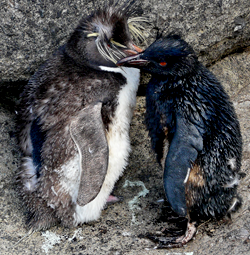

Oiled Northern Rockhopper penguins — an endangered species — at Nightingale Island (Photo: Trevor Glass)
WHAT HAPPENED
For reasons still under investigation, the 75,300 ton Greek freighter Oliva, en route from Santos, Brazil to Singapore with a cargo of soya beans ran aground onto the rocks at Nightingale Island’s northwestern corner at 430am on March 16, 2011. By early the following morning, when the Silversea expedition vessel, Prince Albert II arrived on scene, the Oliva‘s captain reported water in the engine room and the ship had a significant fuel leak from its tanks carrying 300,000 gallon load of heavy marine oil. Ten crew members were rescued by the fishing vessel Edinburgh, but high winds and heavy swell prevented the rescue of the remaining 12 crew.
Thankfully, the Prince Albert II‘s expedition team — specially trained in the operation of Zodiacs in heavy weather — rescued the remaining 12 crew. The expedition team reported heavy oil conditions in the water. Less than 12 hours later, Oliva broke apart on the rocks and the stern section which housed the crew, rolled onto its side and into the waves.
Once ashore at Tristan de Cunha on March 19th, The Ocean Foundation’s Dr. David E. Guggenheim — who was aboard Prince Albert II as a guest lecturer — met with Trevor Glass, Director of Tristan da Cunha’s Department of Conservation. Mr. Glass reported that oil had completely encircled Nightingale Island and that half of the penguins were emerging from the water covered in oil. Oiled seals were also observed along with albatross and other birds. Tristan de Cunha’s economy depends almost entirely on its crawfish exports, 75 tons of which are fished at Nightingale Island. Mr. Glass’ team of 9 remained on Nightingale Island implementing its plan to prevent a possible invasion by rats from the ship. Nightingale is a rat-free island and the presence of rats could be devastating to its bird populations. Fortunately, no rats had been reported on the island after the incident.
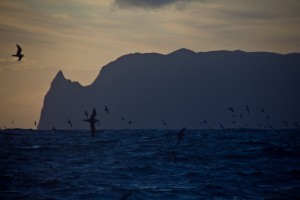
The oil spill from the wreck of the “Oliva” has now reached Inaccessible Island, a World Heritage Site and home to one of the world’s most important concentrations of seabirds
The remoteness of Tristan de Cunha, which has no landing strip, means that the nearest help is a 4-7 day boat ride away (from Cape Town, South Africa). Trevor’s team is not equipped to deal with an oil spill of this magnitude and outside assistance is desperately needed. The Prince Albert II was able to supply Mr. Glass’ team with parkas, gum boots and gloves before its departure. In the time since, the oil has reached and enveloped nearby Inaccessible Island, a World Heritage Site and many oiled penguins were observed on Inaccessible. Mr. Glass and his team are attempting to bring oiled penguins back to Tristan da Cunha for rehabilitation but need assistance and equipment.
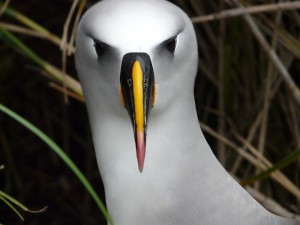
Yellow Nosed Albatross on Nightingale Island (Photo: Trevor Glass, Tristan de Cunha Conservation Department)
WHAT’S AT STAKE
The Tristan de Cunha island group represents the second largest concentration of sea birds in the world. Half of the world’s endangered Northern Rockhopper penguin population is found here. Nightingale Island holds more than 100,000 pairs of Northern Rockhopper penguins, 20,000 pairs of albatrosses including the yellow nose albatross, and 2,000,000 pairs of Broadbill prions. The island is also home to the highly-endangered Tristan Bunting. Only 50 pairs remain in the world, all of which are found on Nightingale Island.

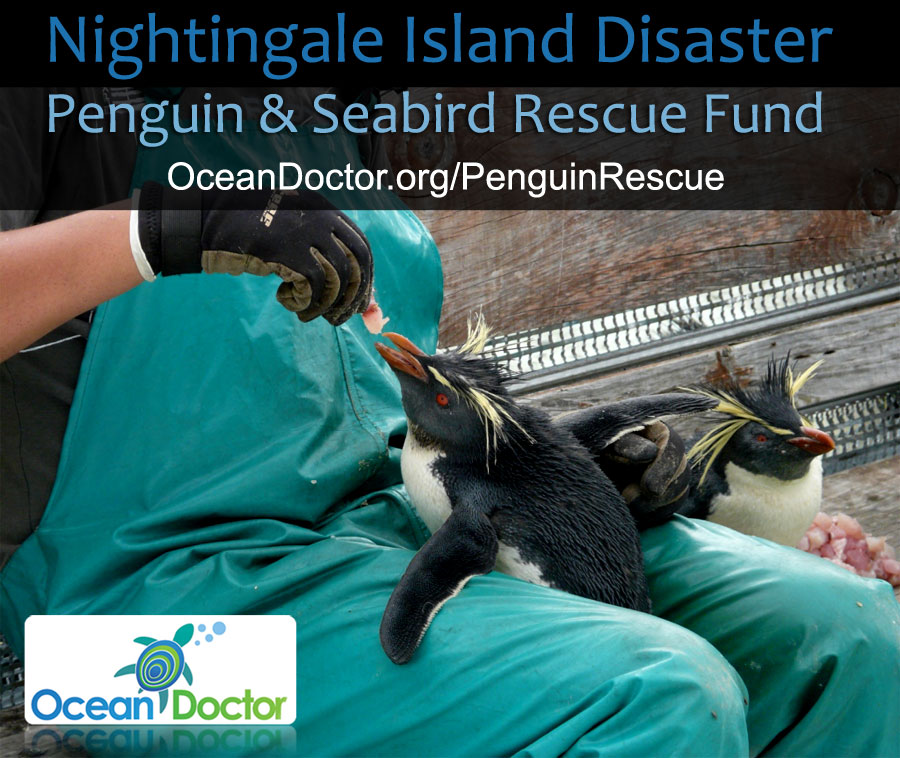
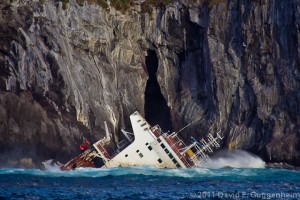
when did this happen? what’s going on now?
2011. Seems okay, apparently.